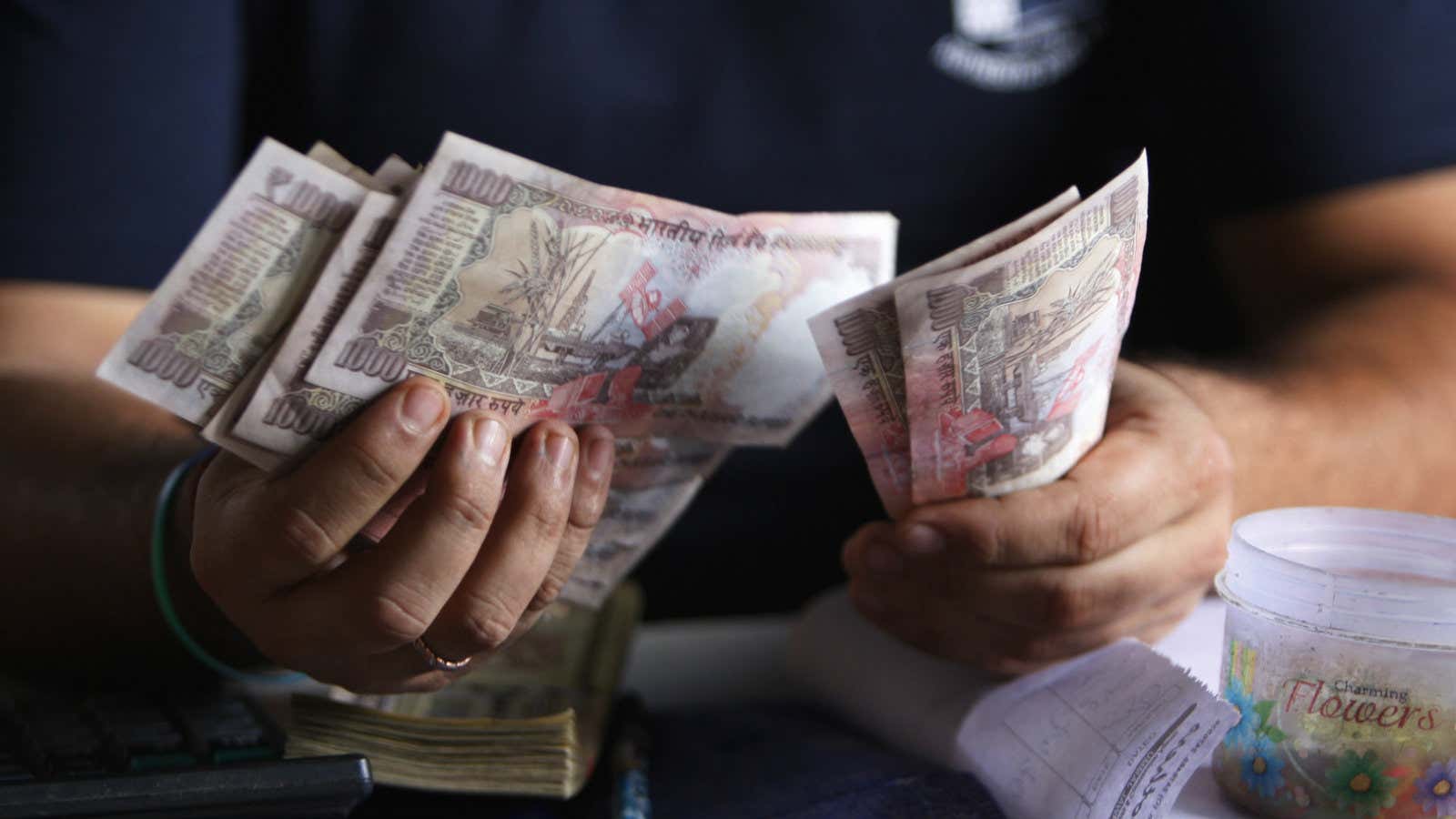India’s government employees and pensioners are getting a massive pay hike.
On Wednesday (June 29), the Narendra Modi-government approved the recommendations of the Seventh Pay Commission (pdf) to hike the pay and pensions of central government employees by 23.55%. This will benefit some 10 million people—4.7 million current employees and 5.3 million pensioners—in Asia’s third-largest economy.
Although the Rs1.02 lakh crore ($15 billion) the government will have to shell out for this will stretch its expenses, the world’s fastest-growing major economy is bound to benefit in other ways. Bigger salaries would mean increased savings and higher purchasing power, boosting consumption and demand.
The proposal, first made in budget 2016 presented by finance minister Arun Jaitley in February, was also aimed at closing the gap between government and private sector jobs. The recommendations include increasing the minimum pay of a new recruit to Rs18,000 a month from Rs7,000 earlier.
What’s a Pay Commission?
The Pay Commission is a government-appointed panel of advisers that studies the salary structures of central government employees and recommends changes or revisions. The first such panel was formed in 1946. Typically, a commission is constituted every 10 years.
All central government employees, personnel of the All India Services (civil services, administrative services, forest services and police services), employees of India’s union territories, defence personnel, the supreme court of India, and those of regulatory bodies, excluding the Reserve Bank of India, fall under the commission’s purview.
The current one—the seventh—was constituted in Feb. 2014, and was headed by Ashok Kumar Mathur, a retired judge of India’s supreme court. Other members include senior bureaucrats and economists. The first report (pdf) of the Seventh Pay Commission was submitted on Nov. 19, 2015.
What does it mean for the economy?
It’s a mixed bag.
First, the bad news: The huge expenditure will hit the government’s exchequer.
“The inevitable consequence of this would be a pressure on the budget,” Jaitley told reporters, after the cabinet’s decision. “(But) I have already provided for it in this year’s budget estimates. Therefore, the amount doesn’t come to us as a surprise.”
But analysts indicate a huge gap between the budget provisioning and actual expenditure. Here’s an explanation from the State Bank of India, the country’s largest lender:
The recommendations are estimated to put an additional burden of Rs1.02 lakh crore, or nearly 0.7% of the GDP, on government’s exchequer, although the provisions made by union budget 2016-17 are at Rs53,844 crore. So, the concern is, how the government will pay the additional Rs38,200 crore, to implement the pay commission recommendations.
This will make it tougher for the government to maintain its fiscal deficit—the difference between its revenue and expenses—target. For the financial year 2016-17, the government wanted fiscal deficit capped at 3.5% of the GDP. “The only way for the finance minister to (now) hold on to his promise of meeting fiscal deficit targets is to compromise on the capital expenditure,” an editorial in The Indian Express newspaper said.
A cut in capital expenditure means lower investments in infrastructure, for instance, that could slow down growth.
Now, the good news.
When some 10 million Indians earn more every month, consumption and savings will likely increase. Consumption is estimated to rise by Rs45,110 crore ($6 billion), which is 0.3% of the GDP, according to India Ratings and Research, a credit ratings agency. Savings, according to the agency, would grow by Rs30,710 crore ($4.5 billion)—0.2% of the GDP.
This bodes well for domestic demand. ”A rise in demand is likely to not only increase capacity utilisation,” Devendra Pant, chief economist at India Ratings, said in a note, “but may also help revive the investment cycle earlier than expected.”
